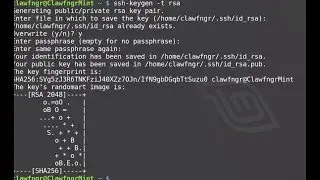Continuous Integration & Continuous Deployment: CICD
Are you struggling to deliver your software projects on-time and on-budget? Is your team struggling to collaborate effectively? Continuous Integration and Continuous Deployment can help.
What is Continuous Integration?
Today software development is a collaborative effort.
When a team is working on a project, each developer takes the code from the master branch and starts making changes. The branches are used to develop new features and resolve bugs. Modern version control tools like Git, Subversion, and Mercurial make it easy to use this workflow.
However, as the different branches diverge, merging the changes back into the master codebase becomes a challenge. Software teams are not a big fan of the integration process. It can slow down development, introduce new defects and even cause team meltdowns.
Continuous integration or CI helps developers validate code integration on a regular basis. It helps fix bugs faster, automates testing, and increases confidence in the software development workflow.
In a continuous integration environment, a development team will use a tool like Jenkins, Circle CI or Go CD. The preferred CI tool is set up on a dedicated server to detect any new code commits.
Whenever there’s a change, the continuous integration tool will automatically build and test the new code and integrate it into the codebase. Developers are encouraged to commit their code regularly to make the workflow seamless.
CI helps mitigate risks, improves team communication, reduces overhead, and creates a consistent build process. Teams don’t have to spend time fixing complicated integration problems. Small and incremental testing of new code ensures that the software product maintains a healthy state.
It paves the way for Continuous Delivery and Continuous Deployment.
In a Continuous Delivery environment, the code is always releasable. Whenever a developer commits any change, the code goes through the CI and automated testing pipeline. On successful completion of testing, the software is considered ready for release.
Continuous Deployment or CD takes the Continuous Delivery idea further. Whenever a developer commits code, after successful automated testing, it is deployed to the production environment. Customers get access to it instantly. The process requires a higher level of confidence in the automated testing pipeline.
Continuous Deployment creates a frictionless and unified workflow across development, testing and production environments. Teams that reach efficiency in this process can ship products faster at a larger scale. Whether you are a small development studio or a large enterprise, continuous deployment can work for you.
Overall, CI and CD improve the velocity, productivity, and sustainability of software development teams. Teams can respond faster to changes in the marketplace. There are less tedious and repetitive tasks. It leads to happier teams that lasts longer and produces better products.
Learn more about continuous integration and deployment. It can change the way you develop software.



















